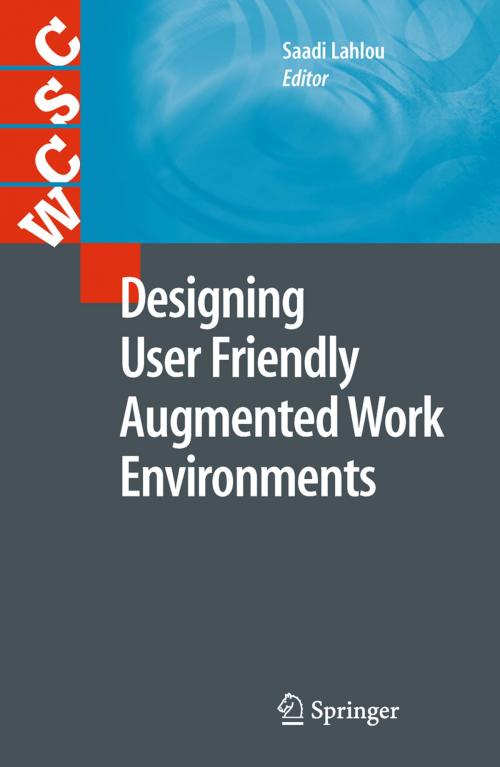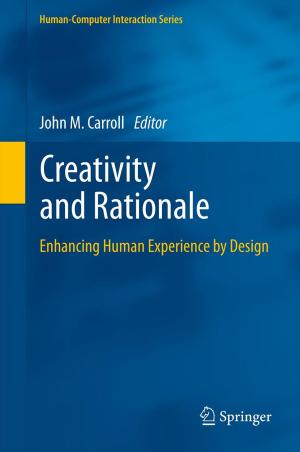Designing User Friendly Augmented Work Environments
Nonfiction, Computers, Advanced Computing, Programming, User Interfaces, Application Software, Multimedia, General Computing| Author: | ISBN: | 9781848000988 | |
| Publisher: | Springer London | Publication: | October 8, 2009 |
| Imprint: | Springer | Language: | English |
| Author: | |
| ISBN: | 9781848000988 |
| Publisher: | Springer London |
| Publication: | October 8, 2009 |
| Imprint: | Springer |
| Language: | English |
This book aims at capitalizing and transmitting know-how about the design of Augmented Environments (AE) from some of the most prominent laboratories in the field worldwide. The authors belong to the RUFAE network (Research on User- Friendly Augmented Environments, founded in 2002) who meet in research seminars to share experience; Writing this book was perceived as an opportunity to look back over the last few years to sum up important findings; and formalize their approach and experience, which they never had the time or opportunity to do. Although the authors of this book have very different backgrounds, striking similarities emerge in their approach and design principles: never-endingness, activity-orientedness, continuous design, realism are some of the pillars of this approach; enabling to deal with the complex, heterogeneous, multi-user and mul- purpose constructions which AE designers have to face. The book illustrates how these principles enabled them to construct robust, ef- cient, and user-friendly Augmented Environments in spite of the many challenges to make these operational. We hope their experience will help the reader. Primary audience: Academics, Students and Professionals involved in the CHI, CSCW, Ubicomp, Cooperative Building communities. Computer Scientists int- ested by end-users and applications, Social Scientists operating in the IT domain, IT & Organization Consultants. Secondary audience: Developers of office and conferencing applications or middleware, Architects of office buildings, Space Planners, Designers; Facility Managers; IT, furniture & building Business Communities.
This book aims at capitalizing and transmitting know-how about the design of Augmented Environments (AE) from some of the most prominent laboratories in the field worldwide. The authors belong to the RUFAE network (Research on User- Friendly Augmented Environments, founded in 2002) who meet in research seminars to share experience; Writing this book was perceived as an opportunity to look back over the last few years to sum up important findings; and formalize their approach and experience, which they never had the time or opportunity to do. Although the authors of this book have very different backgrounds, striking similarities emerge in their approach and design principles: never-endingness, activity-orientedness, continuous design, realism are some of the pillars of this approach; enabling to deal with the complex, heterogeneous, multi-user and mul- purpose constructions which AE designers have to face. The book illustrates how these principles enabled them to construct robust, ef- cient, and user-friendly Augmented Environments in spite of the many challenges to make these operational. We hope their experience will help the reader. Primary audience: Academics, Students and Professionals involved in the CHI, CSCW, Ubicomp, Cooperative Building communities. Computer Scientists int- ested by end-users and applications, Social Scientists operating in the IT domain, IT & Organization Consultants. Secondary audience: Developers of office and conferencing applications or middleware, Architects of office buildings, Space Planners, Designers; Facility Managers; IT, furniture & building Business Communities.















